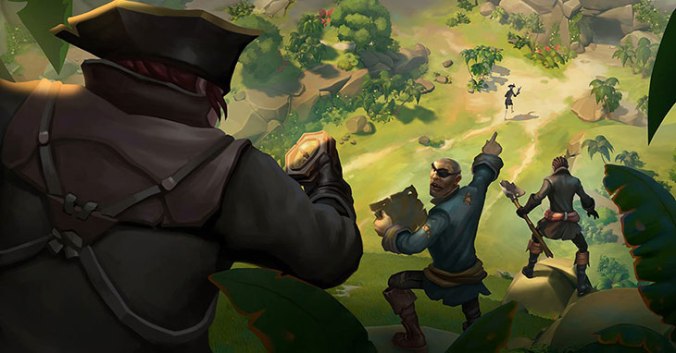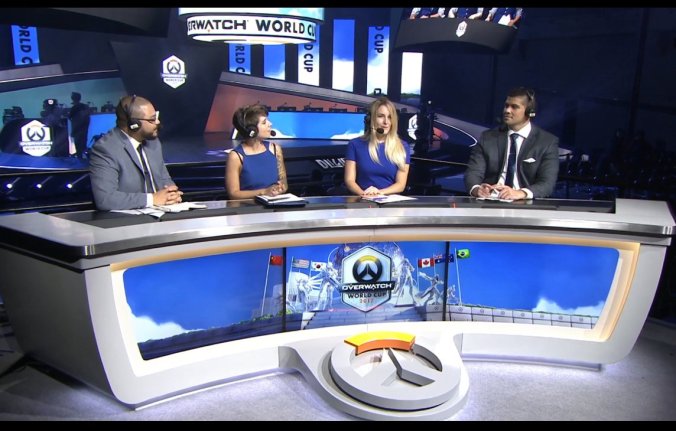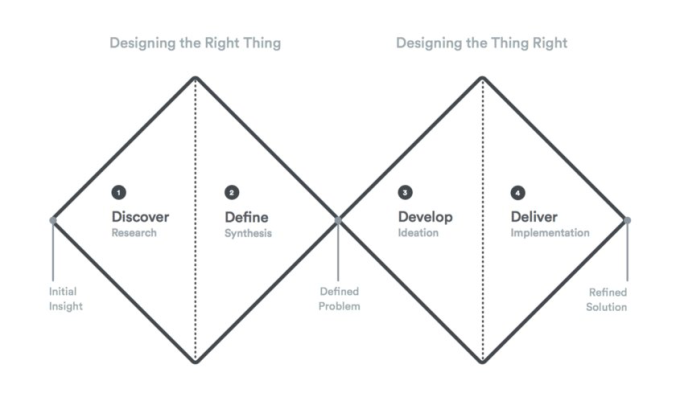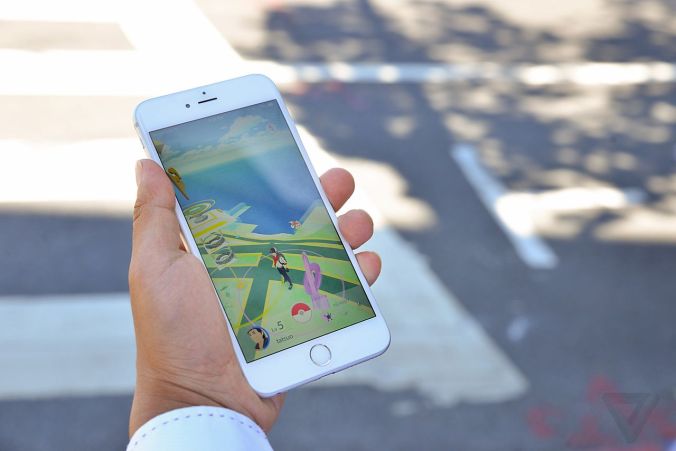[Version 2 – as I rushed the initial post and have added some headings to break it down]
Introduction
The latest craze – sayeth the media – Pokémon Go! has got people out and about. Some apparently unaware of their surroundings and having injuries while others are just of having fun, discovering why ARGs are able to turn fantasy into reality (sort of) even just for a short moment.
People like it and for good reasons. So yes, I think teachers should care and it is rare to be able to jump in at the start of a ‘new thing’ in gaming as kids probably already have the app and are playing it. The game does have issues – rural areas less well supported, socio-economic factors, cultural differences, social inclusion (read this article) but perhaps this just helps highlight the issue with many games — and education’s obsession with digital gadgets – and people stopped talking about ‘the digital divide’ a long time ago. Now its an awkward reality that some schools have plenty more than others — as to their students.
Mass media has been quick to point out the doubling of Nintendo’s stock price, and that’s not necessarily good for the games entertainment giant – as I’ll explain shortly. Pokémon is loved by adults and kids in popular culture, some will have played Mario and Zelda – but there’s a generation playing Go! who are not playing for nostalgia. This game is aimed at a new generation for whom the smartphone camera, GPS, and data-streaming is primordial. Pokémon Go! has the magical tech-features+brand+enjoyment that they want from their device time – and want to talk to their friends about.
The doubling of Nintendo’s company value suggests an expectation that Nintendo will monetize and leverage this craze. Investors are literally banking on brand power plus ARG to yield a big return. Yes, you will run out of pokeballs, and you have to work for them or buy them. Everyone wants to know how to get more Pokeballs!
Getting a few balls at a Pokéstop every ten minutes or so is tedious. Speed this up with an in-app purchase. Nintendo is in new territory here, but the clear line of sight to Google and not to Zelda will see significant changes – good, bad and stumbling perhaps in the games roll out. Pokéstops are a significant cultural leap to ‘gamified shopping’ destinations … but surely no one would drive five miles to wait ten minutes for 4 balls to flick at an imaginary creature … and so shopping as you know it is already changed.
Because the game’s Pokéstops are based on the cultural production of Ingress players – many gyms and Pokéstops are buildings and landmarks – including shops. Small business is seeing people at their door – but who knows if they are buying? This may then see people drawn away from ‘the mall visit’ and we might see people back on the high street and parklands.
Playing the game
The game is easy in the early days. More and more posts and redditor postings suggest the mechanic makes it hard to progress. As I’ll explain, for kids, this will be a drop-off point, but to that point, there’s a window of opportunity to explore the next generation of gaming – in your local backyard.
Arts Technica writes “While advancing to level 15 only requires a few thousand experience points per level, by the time you hit level 30, it takes a full 500,000 experience points to increase your in-game status”. We know that kids often stop playing games pretty quickly from recent research, and the younger children ‘churn’ games constantly when they feel it get’s too punishing. Overall mobile games have a high ‘pick up and drop’ frequency – especially free-to-play (with micropayment) games. The industry is still learning, so I’m sure Pokémon Go! will teach the whole industry a lot about human behaviour in a short time.
We know too, that hanging around a Pokéstop for a slow refill is the ARG version of the MMO’s ‘grinding quest’, except that you’re stuck in reality — and not in the fantasy you crave. So for teachers – Pokémon Go is a decent enough ‘entry’ for a discussion about ARGs and human behaviour, but I personally would be very wary of promoting in the way we’ve seen some teachers jump on the Microsoft Minecraft jetstream. I predict this game opens a door to what has been a dwindling interest in the ‘games are addictive’ dogma which first appeared in the 1990s. I can imagine the clinical psych’s will be banging out abstracts by the dozen right now about how dangerous this is … and maybe they will more right about ARGs than they have about MMOs and MOBAs so far.
We already hearing ‘news’ reports of Pokémon farming and exploitation, how much it costs to buy Pokéballs, people walking off cliffs, crashing cars etc., all things we didn’t hear about Ingress of course.People have asked me for ages why some games seem to ‘click’ with kids and can be useful in class – and some don’t. Right now the world works like this. It’s not what advertising says about a brand that makes it successful, it’s what people say about to each other. Pokémon Go! has relied on this network-effect to propel it to ‘craze’ level. Anyone who separates games and learning really knows little about either these days because the two things are inseparable in children’s media culture today. Minecraft has grown inside education networks because of the same (though tiny) network effect – and again, needs to do something ‘more’ if it is to be sustained. As I track what teachers talk about online (towards games and in a non-creepy way) – Minecraft (Education) has trended down since Pokémon Go!. One reason I think is because teachers are far more curious about ARG potential than virtual legos. What they are concerned about (and what to know about) is what games do this ‘fantasy-magic-learning-stuff’. My attitude is – lots of games – go and try some. But what is perhaps more helpful is to think about what kid want from playing a game – and playing one at school that’s not a crappy edumacated game – or we turn Pokémon Go into a lame class lesson – such as let’s have a debate – half the class is to argue for Pokémon Go and the other in Pokémon No. (My daughter came home with that one this week, every kid thought the teacher was reaching a bit).
People have asked why some games seem to ‘click’ with kids and can be useful in class – and some don’t. Right now the media-world0culture works like this. It’s not what advertising says about a brand that makes it successful, it’s what people say about to each other. That is why my teenager and his friend had me driving them to an actual parkland (as in out-doors). So if Pokémon Go! can get a hardcore MOBA/MMO player outside … it’s got something going for it. I don’t think it’s the game though – as I’ll explain towards the end of the post – it’s about human behaviour around technology and the fact that outside of media outrage and Trump hate, we do quite like to hang out and have fun IRL.
Pokémon Go! has relied on this network-effect to propel it to ‘craze’ level in a few days. Think about that for a second. It means that anyone who separates games and learning really knows little about either these days because the two things are inseparable in children’s media culture today. If that anyone is a teacher, then we have the accept we have media literacy challenges (but we know that it’s been like this for twenty years or more)
Step outside the Pokémon click-bait and let’s think about established go-to-game for educators. Minecraft has grown inside education networks because of the same (though tiny) network effect. It needs to do something ‘more’that being repacked and sold under the Windows biome if it is to be sustained with genuine interest by kids. Why? Because its what kids say to kids about games and anyone with a ‘real Minecrafter’ in their house knows that the advanced ‘fun’ is in modding and morphing the shared game play experience with friends. I’ve never liked MinecraftEdu because it was a business idea, not a new theory of play or gaming. I acknowledge that it helped get the game into schools – but at no point could anyone seriously argue games and play were not going to zerg-rush into schools – and to me Minecraft is the ‘safe’ option and I reject the ‘better than nothing option’. The fact games are still ‘on request’ tells us all we need to know about the ideology of mass education still.
Is Pokémon Go! impacting education?
I track what teachers talk about online (towards games and in a non-creepy way). Minecraft (Education) has trended down since Pokémon Go! this week. Teacher’s attention have been tuned this week from Minecraft to Pokemon. Microsoft to Nintendo. That’s a big thing in itself.
One reason I think is because teachers are far more curious about ARG potential than virtual legos. What they are concerned about (and what to know about) is what games do this ‘fantasy-magic-learning-stuff’. My attitude is – lots of games – go and try some. But what is perhaps more helpful is to think about what kid want from playing a game – and playing one at school that’s not a crappy edumacated game – or we turn Pokémon Go into a lame class lesson – such as let’s have a debate – half the class is to argue for Pokémon Go and the other in Pokémon No. (My daughter came home with that one this week, every kid thought the teacher was reaching a bit).I think is because teachers are far more curious about ARG potential than virtual legos. What they are concerned about (and what to know about) is what games do this ‘fantasy-magic-learning-stuff’. My attitude is – lots of games – go and try some. But what is perhaps more helpful is to think about what kid want from playing a game – and playing one at school that’s not a crappy edumacated game – or we turn Pokémon Go into a lame class lesson – such as let’s have a debate – half the class is to argue for Pokémon Go and the other in Pokémon No. (My daughter came home with that one this week, every kid thought the teacher was reaching a bit).
Why would teachers be interested?
I think is because teachers are far more curious about ARG potential than virtual legos. They are probably bored of ‘another Minecraft preso’. I have done once since 2012 in Dundee – and that wasn’t about school – that was about what happens when kids get agency though video games.What they are concerned about (and what to know about) is what games do this ‘fantasy-magic-learning-stuff’. My attitude is – lots of games – go and try any. But what is perhaps more helpful is to think about what kid want from playing a game – and playing one at school that’s not a crappy edumacated game – or we turn Pokémon Go into a lame class lesson – such as let’s have a debate – half the class is to argue for Pokémon Go and the other in Pokémon No. (My daughter came home with that one this week, every kid thought the teacher was reaching a bit).
Many teachers are concerned about the academic value of video games and how to align them with the outcomes school systems use. I get that, I really do – but teaching is not about the material and the outcomes alone, it’s about letting the child being the best that they can be. My attitude is YES, GAMES ARE IMPORTANT – go and try some. But what is perhaps more helpful is to think about what kids want (and get) from playing a game – and playing one at school that’s not a crappy edumacated game. Avoid turning Pokémon Go into a lame class lesson – such as “let’s have a debate – half the class is to argue for Pokémon Go and the other in Pokémon No” (My daughter came home with that one this week, every kid thought the teacher was reaching a bit)
“What kids want” is connected to computers and human behaviour. We can’t assume a 10-year-old has a 10-year-old media age – as we know, some 40-year-olds don’t have a 10-year old’s media age. why Pokémon Go is going to be good – aside from the initial network effects.
Teachers should care about Pokémon Go! – after from the initial network effects (craze) as it is a good way for kids to develop socially. It isn’t designed for education and certainly presents the all too common accessibility issues of commercial games – but THIS game leads you to start thinking about why games, play and learning are important – and how they can be connected with helping children deal with saturated media cultures – Great!
Here are the four key things that research is telling us about MMOs, MMORPGs, Networked Gaming, MOBAs etc., and it’s all about humans making sense of their transmedia lives – though pleasurable leisure choices. It’s part of the social history of our time.
What are the key things teachers can observe and learn from this?
- Multimodal connectedness is associated with bridging and bonding social capital
- Playing with existing offline friends is associated with bonding social capital.
- Playing with offline and online friends is associated with bridging social capital.
- Multimodal connectedness moderated the relationships between co-players and social capital
What does the research say?
There’s a lot of research around these four things, but so far, when we need much more research about specific MOBAs (LoL, Overwatch etc) and ARGs (Pokémon Go, Ingress, Zombie Run etc. For example, what are children’s attitudes towards the frequency of playing ARGs and how do the interaction and experiences of play vary in group size, cultures, gender etc., But you might be surprised to find very little research is being done – or has been done outside of the ‘giants’ of gaming – Warcraft, Ultima, Doom etc., and this research is good ‘beachhead’ reading, but it hasn’t had a huge impact on what teachers believe about games in their classrooms. What teachers should try and bring to games in the classroom are objects which give them a clear(er) sense that what drives kids. This is not the
You might be surprised to find very little research is being or has been done outside of the ‘giants’ of gaming – Warcraft, Ultima, Doom etc., so far. While this research has developed a good ‘beachhead’ in video games, especially since 2001 – it hasn’t had a huge impact on what teachers believe about games in their classrooms. What teachers should try and bring to games in the classroom are objects which give them a clear(er) sense that what drives kids. This is not the
What teachers should try and bring to games in the classroom are objects which give them a clear(er) sense that what drives kids. This is not the material content or an ability to sandbox build castles. Seeing the child’s developmental curiosity and ability to experiment with these four things – alone and in groups is quite an experience.
Of course, this is just a theory (at best) and part of what I’m interested in.
Families who have high levels of multimodal connectedness and actively apply it to create bridging and bonding capital appear to have ‘the edge’ over parent’s who don’t. We are raising children who need to be confident and successful in these things – because human behaviour is changing with technology – and what we (as adults) are expected to do or not do with it and though it matters in life.
What does EdTech seem to think?
Sadly EdTech doesn’t see games as important as it could (as a public dialogue). EdTech relies on the network effect to popularise certain products and ignore others. It also uses it to make some people famous/important and others customers, clients and the object of their commentary. So for the most part, Pokémon Go! will not be placed on the high altar of importance – such as Google Classroom or Apple’s wadjamacallit. So this game may well come — and go. It is now competing with Microsoft Minecraft Eduction, which has a fairly established group of advocates and popular ideas. Let’s not forget, there is alway plenty of people competing for attention in EdTech — and the gamer ‘hackedu’ types are misfits sitting in the corner. But you never know, Sir Ken might visit a Pokéstop near you.
Summing up
So I hope teachers will give it some attention. Pokémon Go! (early levels) is super easy to try and learn from – but when it stops being ‘fun’ – quit – because quitting games can just as enlightening as playing them.
If nothing else, you’ve walked in the half-real world of video games and perhaps taken the dog for an unexpected walk, hatched a few eggs and maybe visited a different kind of gym.





